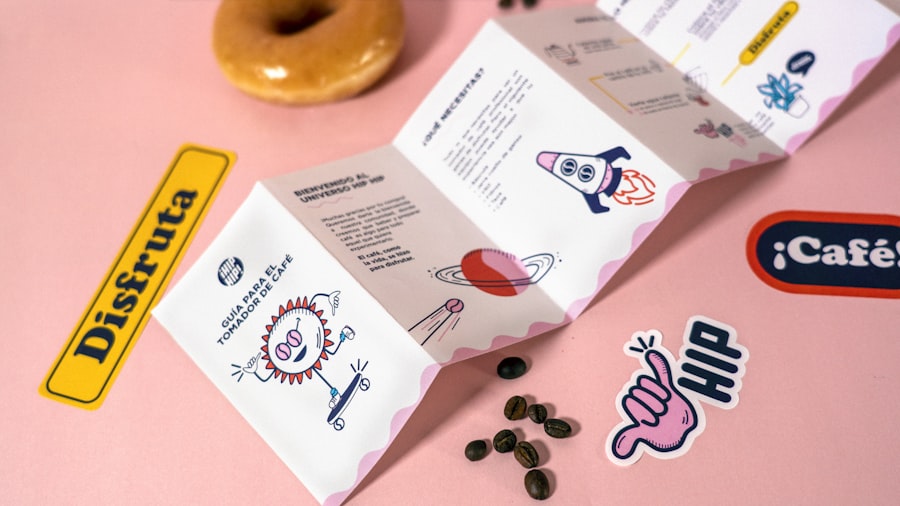Branding health is a multifaceted concept that encompasses the ways in which branding influences our perceptions, behaviors, and overall well-being. At its core, branding is not merely about logos or catchy slogans; it is about the emotional and psychological connections that individuals form with products, services, and even ideas. In the context of health, branding can shape how we view wellness, fitness, nutrition, and mental health.
It plays a crucial role in how we identify with certain lifestyles and health practices, often dictating our choices and influencing our habits. The significance of branding health extends beyond consumer products; it also applies to personal identity and self-perception. Individuals often curate their personal brands based on their values, beliefs, and aspirations related to health.
This self-branding can manifest in various ways, from the way one presents themselves on social media to the choices they make regarding diet and exercise. Understanding branding health requires an exploration of how these elements interact and influence one another, creating a complex web of associations that can either promote or hinder well-being.
Key Takeaways
- Branding health involves understanding how personal and public brand identity affects overall well-being.
- A strong personal brand can positively influence mental, physical, and emotional health.
- Utilizing branding strategies can enhance social connections and support networks.
- Integrating branding into wellness promotes a holistic approach to emotional and physical health.
- Creating and maintaining a consistent personal brand supports long-term health and well-being goals.
The Impact of Branding on Well-being
Branding has a profound impact on well-being, as it shapes our perceptions of what it means to be healthy. For instance, the wellness industry has seen a surge in brands that promote holistic health, mindfulness, and self-care. These brands often utilize aspirational messaging that encourages individuals to adopt healthier lifestyles.
The imagery and narratives associated with these brands can inspire people to pursue fitness goals or adopt healthier eating habits. However, this influence can also lead to unrealistic expectations and pressures, particularly when branding promotes an idealized version of health that is unattainable for many. Moreover, the impact of branding on well-being is not limited to physical health; it extends into mental and emotional realms as well.
Brands that focus on mental health awareness and destigmatization can foster a sense of community and support among individuals facing similar challenges. For example, campaigns that promote open discussions about mental health issues can help individuals feel less isolated and more understood. Conversely, negative branding—such as stigmatizing labels or stereotypes—can exacerbate feelings of shame or inadequacy, ultimately detracting from an individual’s overall well-being.
Creating a Personal Brand for Health

Creating a personal brand for health involves a deliberate process of self-reflection and expression. Individuals must first identify their core values and beliefs regarding health and wellness. This could include a commitment to physical fitness, mental well-being, or nutritional awareness.
Once these values are established, individuals can begin to craft their personal brand by aligning their actions and choices with these principles. This might involve curating social media content that reflects their health journey, sharing personal stories of triumphs and challenges, or engaging with communities that resonate with their health philosophy. A strong personal brand can serve as a motivational tool, encouraging individuals to stay accountable to their health goals.
For instance, someone who identifies as a fitness enthusiast may share workout routines or healthy recipes online, creating a sense of community among followers who share similar interests. This not only reinforces their commitment to health but also inspires others to embark on their own wellness journeys. Additionally, personal branding can help individuals navigate the overwhelming amount of information available about health by allowing them to filter content through the lens of their established values.
Utilizing Branding to Enhance Mental Health
| Metric | Description | Example Data | Impact on Mental Health |
|---|---|---|---|
| Brand Awareness | Percentage of target audience recognizing the mental health brand | 75% | Higher awareness reduces stigma and encourages seeking help |
| Engagement Rate | Interaction rate with mental health content on social media | 12% | Increased engagement promotes community support and education |
| Trust Score | Survey-based trust rating of the mental health brand | 8.5/10 | Higher trust leads to greater acceptance of mental health resources |
| Help-Seeking Behavior | Percentage increase in individuals seeking mental health services after branding campaign | 30% | Branding encourages proactive mental health management |
| Message Recall | Percentage of audience recalling key mental health messages | 68% | Better recall supports sustained mental health awareness |
Branding can be a powerful ally in enhancing mental health by promoting positive narratives and fostering supportive environments. Brands that prioritize mental wellness often create campaigns that emphasize self-care, resilience, and community support. For example, companies like Headspace and Calm have successfully branded themselves as leaders in the mental wellness space by offering accessible resources for mindfulness and meditation.
Their branding strategies focus on creating a safe space for individuals to explore mental health without stigma or judgment. Furthermore, the use of branding in mental health advocacy can help normalize conversations around psychological struggles. Initiatives like Mental Health Awareness Month leverage branding to raise awareness and encourage open dialogue about mental health issues.
By associating positive imagery and messaging with mental wellness, these campaigns can reduce stigma and encourage individuals to seek help when needed. The impact of such branding efforts can be profound, as they not only validate individual experiences but also foster a sense of belonging within larger communities.
Using Branding to Improve Physical Health
The intersection of branding and physical health is particularly evident in the fitness industry, where brands play a crucial role in shaping consumer behavior. Fitness brands often utilize aspirational marketing techniques that promote an idealized version of physical health—think sleek gym wear or high-energy workout classes. While this can motivate some individuals to engage in physical activity, it can also create barriers for those who feel intimidated or excluded by these representations.
Therefore, it is essential for brands to adopt inclusive messaging that resonates with diverse audiences. Moreover, effective branding can also facilitate healthier lifestyle choices by making nutritious options more appealing. Brands that focus on healthy food products often employ vibrant packaging and engaging marketing strategies to attract consumers.
For instance, companies like Blue Apron or HelloFresh have successfully branded meal kit services that emphasize fresh ingredients and balanced meals. By making healthy eating convenient and visually appealing, these brands encourage consumers to prioritize nutrition in their daily lives.
The Role of Branding in Social Well-being

Branding plays a significant role in shaping social well-being by influencing how individuals connect with one another within communities. Brands that promote inclusivity and diversity can foster a sense of belonging among individuals from various backgrounds. For example, initiatives like Nike’s “Equality” campaign highlight social justice issues while encouraging individuals to come together for a common cause.
Such branding efforts not only raise awareness but also empower individuals to engage in meaningful conversations about social issues. Additionally, social media platforms have become powerful tools for branding social well-being. Influencers and advocates use their platforms to share stories of resilience and community support, creating networks of individuals who uplift one another.
This digital branding fosters connections that transcend geographical boundaries, allowing people to find support and encouragement from like-minded individuals around the world. However, it is crucial for these platforms to maintain authenticity; when branding becomes overly commercialized or insincere, it can lead to disillusionment among followers.
Branding and Emotional Well-being
Emotional well-being is intricately linked to branding as it influences how individuals perceive themselves and their experiences. Brands that prioritize emotional connection often resonate deeply with consumers by tapping into shared values and experiences. For instance, Dove’s “Real Beauty” campaign challenged traditional beauty standards by celebrating diverse body types and promoting self-acceptance.
This approach not only enhanced the brand’s image but also fostered emotional connections with consumers who felt represented. Moreover, emotional branding can serve as a catalyst for personal growth and healing. Brands that focus on storytelling—whether through testimonials or relatable narratives—can create spaces where individuals feel understood and validated in their emotions.
This is particularly important in industries related to mental health or wellness, where emotional resonance can significantly impact an individual’s willingness to engage with resources or seek help.
Integrating Branding into a Holistic Wellness Approach
Integrating branding into a holistic wellness approach requires a comprehensive understanding of how various aspects of well-being interconnect. A successful holistic approach considers not only physical health but also mental, emotional, social, and spiritual dimensions of wellness. Brands that adopt this comprehensive perspective can create more meaningful connections with consumers by addressing their diverse needs.
For instance, wellness brands that offer products or services encompassing multiple dimensions—such as yoga studios that provide classes focused on both physical fitness and mindfulness—can effectively cater to individuals seeking holistic solutions. By promoting an integrated approach to wellness through their branding efforts, these companies can foster a deeper sense of community among participants who share similar goals. In conclusion, the interplay between branding and health is complex yet profoundly impactful across various dimensions of well-being.
By understanding how branding influences perceptions and behaviors related to health, individuals can harness its power to enhance their own wellness journeys while fostering supportive communities around them.



